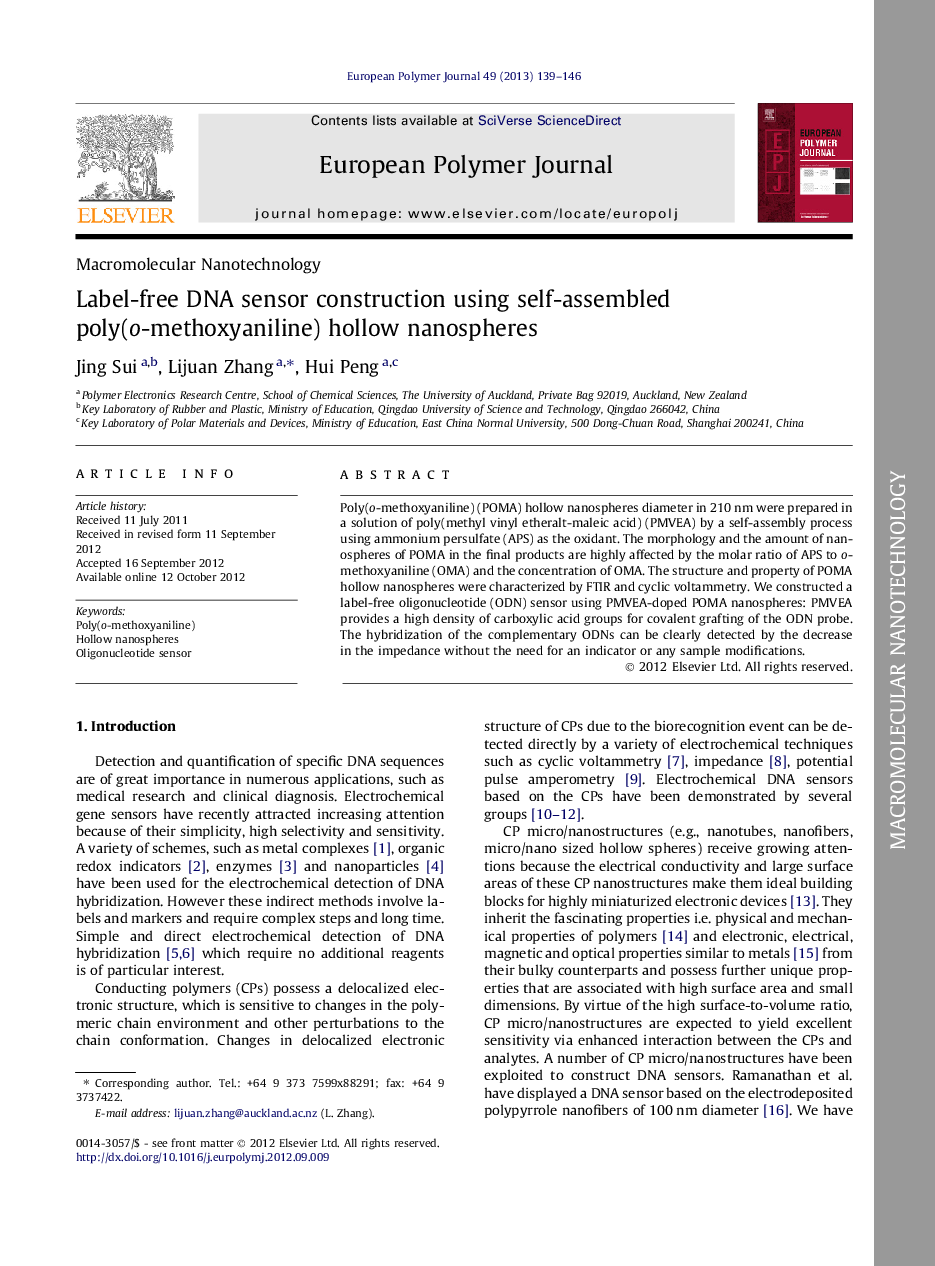| Article ID | Journal | Published Year | Pages | File Type |
|---|---|---|---|---|
| 1395884 | European Polymer Journal | 2013 | 8 Pages |
Poly(o-methoxyaniline) (POMA) hollow nanospheres diameter in 210 nm were prepared in a solution of poly(methyl vinyl etheralt-maleic acid) (PMVEA) by a self-assembly process using ammonium persulfate (APS) as the oxidant. The morphology and the amount of nanospheres of POMA in the final products are highly affected by the molar ratio of APS to o-methoxyaniline (OMA) and the concentration of OMA. The structure and property of POMA hollow nanospheres were characterized by FTIR and cyclic voltammetry. We constructed a label-free oligonucleotide (ODN) sensor using PMVEA-doped POMA nanospheres: PMVEA provides a high density of carboxylic acid groups for covalent grafting of the ODN probe. The hybridization of the complementary ODNs can be clearly detected by the decrease in the impedance without the need for an indicator or any sample modifications.
Graphical abstractPoly(o-methoxyaniline) hollow nanospheres were prepared in a solution of poly(methyl vinyl etheralt-maleic acid).Figure optionsDownload full-size imageDownload as PowerPoint slideHighlights► POMA/PMVEA hollow nanospheres with higher conductivity have been synthesized. ► We constructed a label-free oligonucleotide (ODN) sensor using POMA/PMVEA nanospheres. ► Hybridization of the complementary ODNs can be detected by the impedance decrease.
